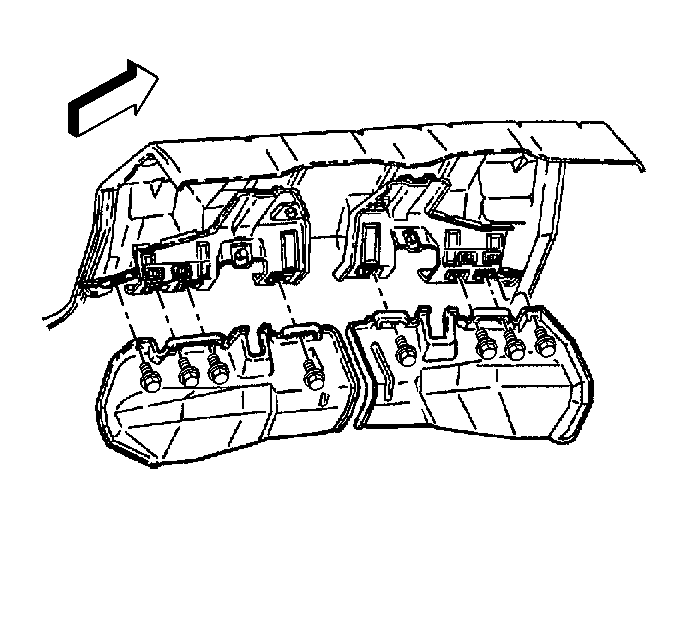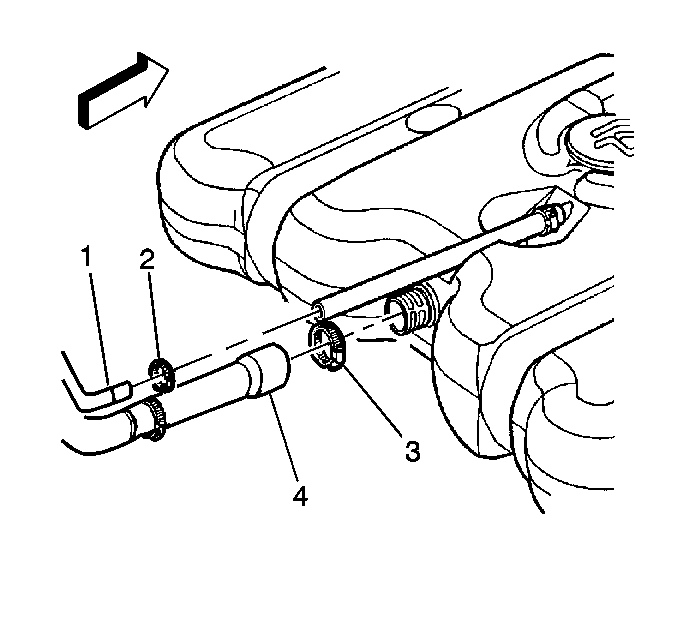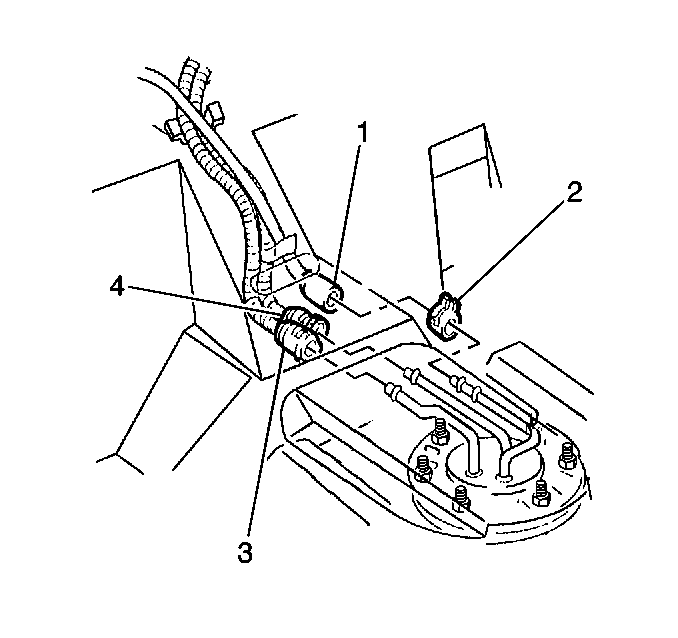Removal Procedure
- Disconnect the negative battery cable.
- Relieve the fuel system pressure. Refer to the Fuel Pressure Relief Procedure.
- Drain the fuel tank. Refer to Draining Fuel Tank.
- Raise the vehicle.
- Remove the lower fuel tank shield attaching screws and the lower fuel tank shields from the upper fuel tank shield.
- Wipe the vent hose connection at the fuel filler vent pipe.
- Disconnect the vent hose (1) and the clamp (2).
- Wipe the fuel filler pipe connection at the fuel tank.
- Disconnect the fuel filler pipe (4) and the clamp (3).
- Wipe the EVAP hose connection at the fuel sender.
- Disconnect the EVAP hose (1) and the clamp (2).
- Disconnect the fuel feed (3) and the fuel return (4) quick-connect fittings from the fuel sender assembly. Refer to Servicing Quick-Connect Fittings.
- Disconnect the fuel sender electrical connector.
- With the aid of an assistant, support the fuel tank.
- Remove the fuel tank strap front attaching bolts and the fuel tank.
- Place the fuel tank in a suitable work area.
- If the fuel filler pipe needs to be replaced, remove the fuel filler pipe attaching screws, the ground strap (Wagon only), and the fuel filler pipe.
- Remove the fuel sender assembly from the fuel tank. Refer to Fuel Sender Assembly Replacement.
- Remove the fuel tank vent hose.

Caution: Provide additional support when a vehicle is on a hoist in the following
ways:
• Before removing parts, support the opposite end. This helps prevent
the vehicle from slipping off. • Before removing major components, chain the vehicle frame to the
hoist pads at the same end as the removal. This helps avoid a tip-off.


Notice:
• Replace kniked nylon fuel feed or return pipes that cannot be
straightened. • Do not repair nylon fuel feed or return pipes. Replace damaged
pipes.
Notice: Do not bend the fuel tank straps. Bending the fuel tank straps may damage the straps.
Installation Procedure
- Install the fuel tank vent hose.
- Install the fuel sender assembly to the fuel tank. Refer to Fuel Sender Assembly Replacement.
- If the fuel filler pipe was replaced, install the fuel filler pipe, the ground strap (Wagon only), and the fuel filler pipe attaching screws.
- With the aid of an assistant, position and support the fuel tank.
- Install the front fuel tank strap attaching bolts.
- Connect the fuel filler pipe (4) and the clamp (3).
- Connect the fuel tank vent hose (1) and the clamp (2).
- Connect the fuel sender electrical connector.
- Connect the fuel feed (3) and the fuel return (4) quick-connect fittings to the fuel sender assembly. Refer to Servicing Quick-Connect Fittings.
- Connect the EVAP hose (1) and the clamp (2).
- Install the lower fuel tank shields on the upper fuel tank shield with the attaching screws.
- Lower the vehicle.
- Refill the fuel tank.
- Install the fuel filler cap.
- Connect the negative battery cable.
- Inspect for leaks.

Tighten
| • | Tighten the fuel filler pipe attaching screws to 6 N·m (53 lb in) (Except Wagon) and 1.9 N·m (17 lb in). |
| • | Tighten the fuel filler pipe ground strap screw (Wagon only) to 4 N·m (35 lb in). |
Tighten
Tighten the front fuel tank strap attaching bolts to 32 N·m
(24 lb. ft.).


Tighten
Tighten the lower fuel tank shield attaching screws to 1 N·m
(9 lb in).
| 16.1. | Turn the ignition switch ON for two seconds. |
| 16.2. | Turn the ignition switch OFF for ten seconds. |
| 16.3. | Turn the ignition switch ON. |
| 16.4. | Check for fuel leaks. |
